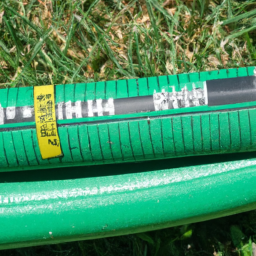Gallons-per-Minute Garden Hose
Table of Contents []
How Many Gallons Per Minute Garden Hose
How Many Gallons Per Minute Does a Garden Hose Produce?
Getting the most out of your gardening projects may depend on the amount of water your garden hose can supply. This helpful guide will not only teach you how many gallons per minute garden hoses can produce but will also provide plenty of useful tips, details, and information to ensure your yard and plants stay lush and healthy.
What Is GPM and Why Does It Matter?
The acronym GPM stands for gallons per minute and is a liquid unit of measurement. In the realm of gardening, it is particularly useful because it can tell you the output of your garden hose based on the water pressure. A hose's GPM number will let you know how long it will take for your garden to fill up or how quickly it can be watered. Knowing the GPM number of your garden hose is particularly helpful when timing your homesteading tasks.
Understanding Hose Sizes and Flow Rate
Garden hoses come in all shapes and sizes with a range of GPMs. A 1/2-inch hose, for example, offers a flow rate of 17 GPM and is 5/8 of an inch or larger. Whereas a 5/8-inch diameter hose offers a flow rate of 23 GPM. To determine the length of garden hose you'll need to reach all of your watering locations, calculate the total length (or GPM) by adding up the GPM associated with your equipment and length of hose.
Garden Hose GPMs
A garden hose with a diameter of inch (1.3 centimeters) will deliver about 9 gallons (34.1 liters) of water per minute. A 1/2-inch garden hose is a good choice to water a small garden or lawn. A 1-inch hose can deliver about 23 gallons (87.6 liters) of water per minute at a pressure of 70 pounds per square inch (psi). Typical household pressures can range from 40 to 80 psi. The pressure of the garden hose also affects the flow rate.
Calculating GPMs for Different Lengths of Hose
If you have a 100-foot-long hose, then you will see a decrease in the overall flow rate. For example, a 100-foot-long, 1/2-inch hose connected to a faucet that supplies water at 40 psi will deliver only about 6 gallons (22.7 liters) of water per minute. Although this may not seem like a lot, it can still be enough to water a small lawn.
Garden Hose Nozzles
When choosing a garden hose nozzle, consider its flow rate. A nozzle with a variable flow rate will let you adjust the water pressure as needed. This allows you to reduce water waste if the plant doesn't need a lot of water. The majority of garden hose nozzles come with a 5 to 8 GPM rating. The GPM number should be clearly marked in the nozzle's specifications.
Garden Hose Pressure Reducers
If you're using an outdoor faucet, you may need to install a pressure reducer. Pressure reducers help ensure that your garden hose receives the right amount of water pressure (ideally, 40 to 45 psi). If your outdoor faucet releases water at a pressure of more than 80 psi, then you will likely need to install a pressure reducer on your hose.
How to Determine the GPM of Your Garden Hose
The easiest way to determine the GPM of your garden hose is to look for the nozzle's flow rate. This number should be marked on the nozzle (in most cases, it will be 5 or 8 GPM). You can also calculate the GPM of your garden hose by adding up the GPM of all connected equipment, including the faucet, nozzles, and hose lengths.
Brief Recap
This article has provided helpful insights on how to figure out the GPM of your garden hose. Remember to add up the GPM of all connected equipment, including the faucet, nozzles, and hose lengths. Also, pay attention to the hose nozzle's GPM rating, and, if your outdoor faucet releases water at a pressure of more than 80 psi, you may need to install a pressure reducer on your hose. With this knowledge gain, you will now have the ability to effectively measure and manage the water output of your garden hose.

Previous Page
